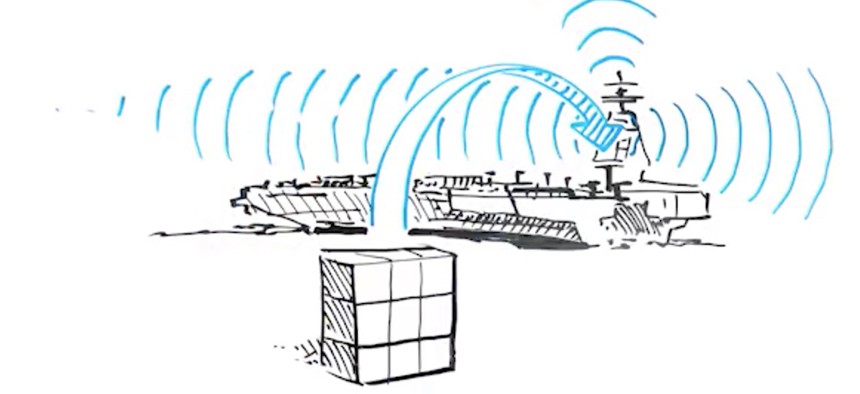sponsor content What's this?

Screenshot
Radar on a road trip
The Navy's newest radar travels to Virginia for a shakedown cruise.
Presented by
Raytheon

See how individual 2'x2'x2' radar building blocks can scale up to protect Navy ships against air, surface and ballistic missile threats.
This is how you make sure the U.S. Navy's next-generation radar is ready for the future.
After a year of intensive calibration and integration at Raytheon’s Near Field Range in Massachusetts, the Enterprise Air Surveillance Radar headed down I-95 to the Wallops Test Facility in Virginia. That’s where the Navy's newly scaled variant of the SPY-6 radar will undergo several months of rigorous, live testing, bringing it closer to full-rate production.
“Going from cold steel to a fully calibrated radar in less than one year is no small feat, but that’s exactly what we accomplished with EASR,” said U.S. Navy Captain Jason Hall, program manager for Above-Water Sensors, Program Executive Office Integrated Warfare Systems.
EASR is headed for aircraft carriers and amphibious warfare ships, where it will provide simultaneous anti-air and anti-surface warfare and electronic protection. It is a scaled version of AN/SPY-6(V)1, the sensor that will be mounted to Navy DDG 51 Flight III destroyers.
It is also the primary radar on aircraft carriers for air traffic control and the backup ATC sensor on amphibious warfare ships. It also keeps carriers ahead of Mother Nature with advanced weather mapping mission software.
Members of the Raytheon team that worked on AN/SPY-6(V)1 integration and testing at the Navy’s Pacific Missile Range Facility in Hawaii traveled with EASR to Wallops. Close to a dozen engineers and technicians met the flatbed truck after the 12-hour trip. After being unpacked, the radar was carefully crane-lifted atop a 100-foot-high tower.
“Once the radar is installed and rotating on the tower, our primary goal is to demonstrate EASR system performance by operating the radar at full power over the air,” said Dave Washburn, EASR program director. “This includes conducting live tests against various aircraft.”
Block by block
To understand EASR, you need to understand what it’s made of. All SPY-6 radars are based on Radar Modular Assembly technology. Each RMA is a 2’x2’x2’ radar in a box. The EASR rotator variant is designated AN/SPY-6(V)2.
“Picture a 6’ x 6’ rotating, single-face, 9 RMA array that replaces the aging and obsolete rotating radars on amphibious warfare ships and NIMITZ class carriers,” Washburn said.
Then there is the EASR fixed-face variant, AN/SPY-6(V)3, which contains three faces each with nine RMAs. This configuration was developed to replace dual-band radar on Ford-class aircraft carriers, starting with CVN-79. This SPY-6 variant is also officially designated for the future FFG(X) guided missile frigates.
Behind-the-scenes, EASR was "boat wrapped" and loaded onto a flatbed trailer in preparation for radar transport. Since it is a smaller array size than the 37 RMA SPY-6(V)1, commercial shipping - on the interstate - was possible. After the team unwrapped EASR, it was lifted onto a tower at Wallops Island, where it'll be operational and rotating in approximately a month.
"Our team (worked) long nights and weekends to make this happen," according to Washburn.
EASR production starts in 2020. The delivery timeline looks like this: The first rotator delivery is to LHA-8 in 2021 and the first fixed face delivery is to CVN-79 in 2023.
To learn more about Raytheon's Air and Missile Defense Radar capabilities, click here.
NEXT STORY: Improving Cyber Mission Assurance with Actionable Insight




